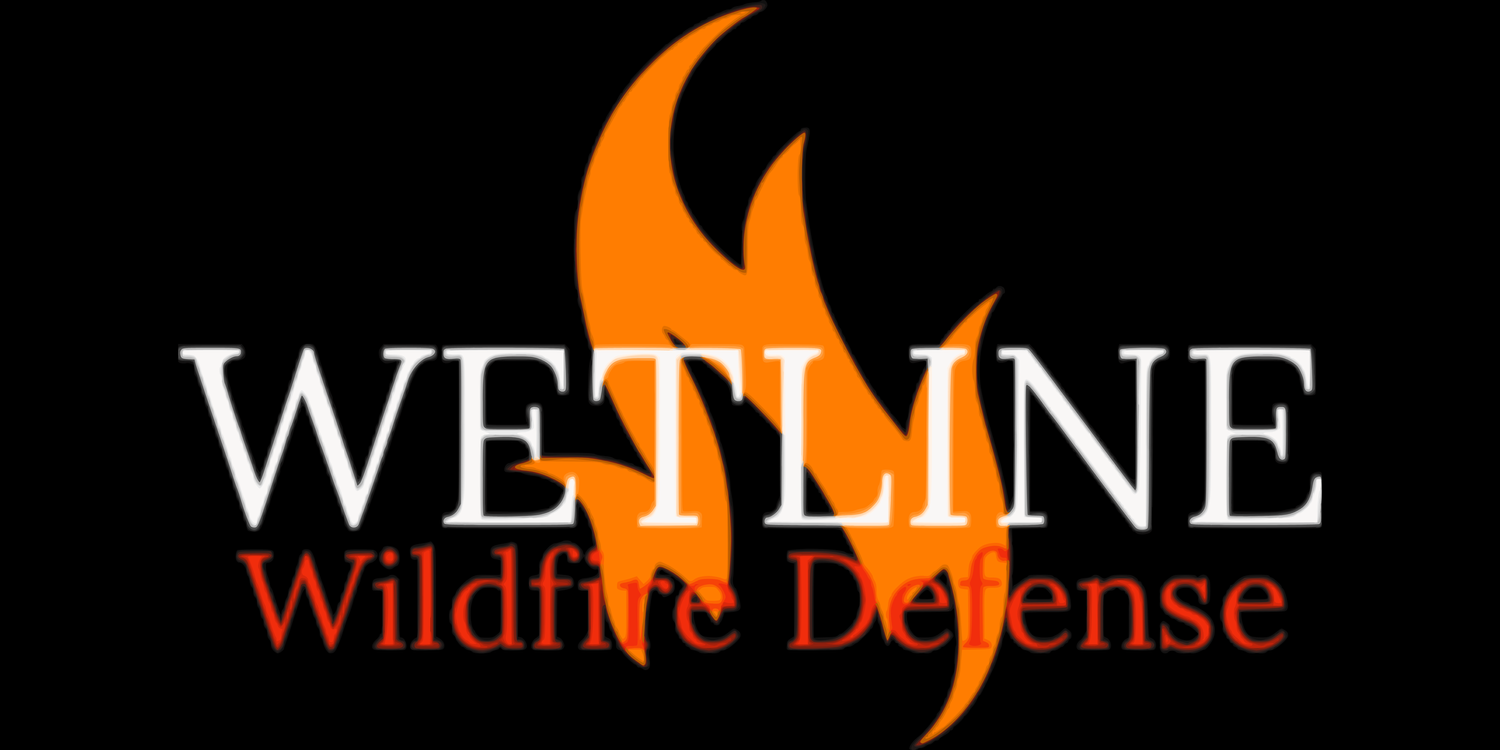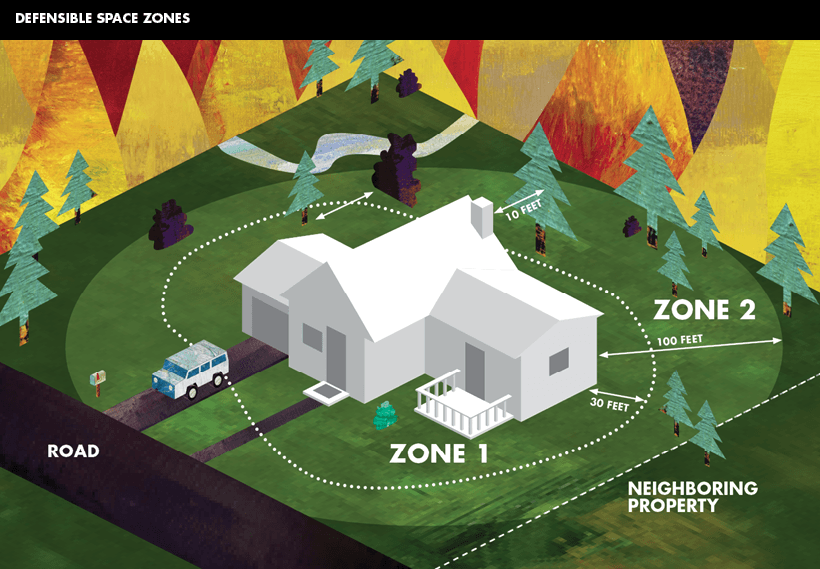Wildfire Risk Reduction - What Homeowners Can Do
Wildfires can burn your home in three ways: directly, by spreading flames from another burning plant or structure; indirectly, through radiant heat from plants and structures that are already on fire; and through flying embers. During a wildfire, flying embers can destroy homes up to one mile away and are responsible for the destruction of most homes during a fire. Taking steps to make your home fire-resistant can help protect it from damage when a wildfire occurs. Here are six areas to focus on, even before installing a Wetline Wildfire Defense system.
Home Ignition Zones
Your home’s ignition zones are places where fires can start.
Zone 1 is within 30 feet of the home.
This space should be free of flammable materials. If your window screens are damaged or broken, repair or replace them. To protect overhangs and attachments, remove fuels (such as leaves) from the area. Also cover any openings that flying embers might find their way into. Look around your home for places where embers might land and start a fire. Remove leaves, branches and other debris from your roof and gutters to keep them clear of flammable material. Fix or replace any loose or missing roof shingles and tiles to prevent ember penetration. Install metal mesh screening with openings that measure 1/8-inch or less over attic vents and other openings in eaves, fascias, and soffits to block embers.
Zone 2 is within 100 feet of the home.
You can reduce the risk of fire in both zones by removing flammable material such as leaves, brush and excess vegetation. This also makes it easier for firefighters to access your home.
Landscaping & Maintenance
Landscaping and maintenance are important for reducing fire risk. Remove all dead plants and vegetation from your yard, roof and rain gutters. Remove dry leaves or pine needles as well as any branches that hang over the roof—making sure to keep a 10-foot distance between the branch tips of trees and chimneys. To reduce the risk of fire spreading from one tree to another, make sure branches on each are at least a 10-foot distance apart.
Roofing & Vents
Due to their flammable nature, wood and shingle roofs are particularly susceptible to damage during wildfires. Build your roof or re-roof with materials such as composition, metal, clay or tile. The spaces between the decking and covering should be blocked to prevent embers from catching; accumulated vegetative debris must also be removed from the roof. Venting can create openings for burning embers. Cover all vent openings with 1/16-inch to 1/8-inch metal mesh, but not fiberglass or plastic—these can melt and ignite. Use vent systems with flame and ember resistant materials.
Decks & Porches
Build surfaces within 10 feet of the building with ignition-resistant* or noncombustible materials. Make sure that all combustible items are removed from underneath your deck, and create an ember-resistant zone around it as well. If a deck overhangs a steep slope, build and maintain firebreaks downhill from the deck to prevent embers from reaching it.
Siding & Windows
Wood products such as boards, panels or shingles are common siding materials. However, they burn easily and should not be used in areas prone to wildfires. Use ignition-resistant* building materials, such as stucco, fiber cement wall siding or fire-retardant treated wood in the construction (or remodel) of your home. This is particularly important in neighborhoods where homes are usually no more than 30 feet apart. Noncombustible materials should be used to replace siding in smaller spaces, such as between the wall and roof. Heat from a wildfire can cause windows to shatter, allowing burning embers to enter homes and start fires. Single-paned and large windows are particularly vulnerable. Install double-paned windows with one pane of tempered glass, or at least limit the size and number of windows that face large areas of vegetation. Install ember-resistant window laminates. Install screens in all usable windows to decrease radiant heat exposure and protect against embers.
Emergency Responder Access
Driveways should be constructed and maintained in compliance with local codes so that fire or emergency vehicles can reach your home. Maintaining access roads at least 10 feet wide will allow for two-way traffic if necessary. Make sure all gates swing inward, and that the road is clear enough for emergency vehicles. Trim overhanging bushes or trees so they do not obstruct traffic during an emergency.
*A Note From Advisor and Retired Division Fire Chief, Will Spyrison About Ignition-Resistant Building Materials
Ignition-resistant building materials are those that resist ignition or sustained burning when exposed to embers and small flames from wildfires. Examples of ignition-resistant materials include “non-combustible materials” that don’t burn, exterior grade fire-retardant-treated wood lumber, fire-retardant-treated wood shakes and shingles listed by the State Fire Marshal (SFM) and any material that has been tested in accordance with SFM Standard 12-7A-5.

